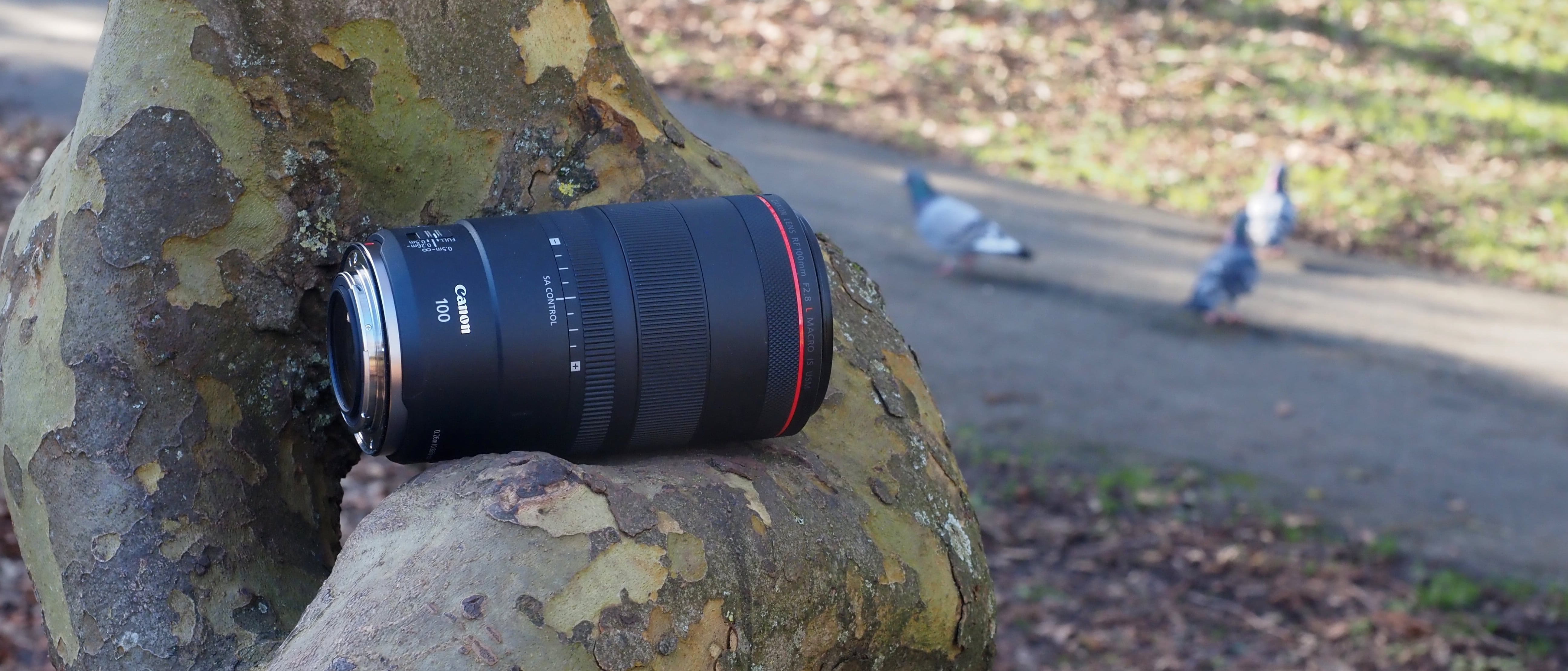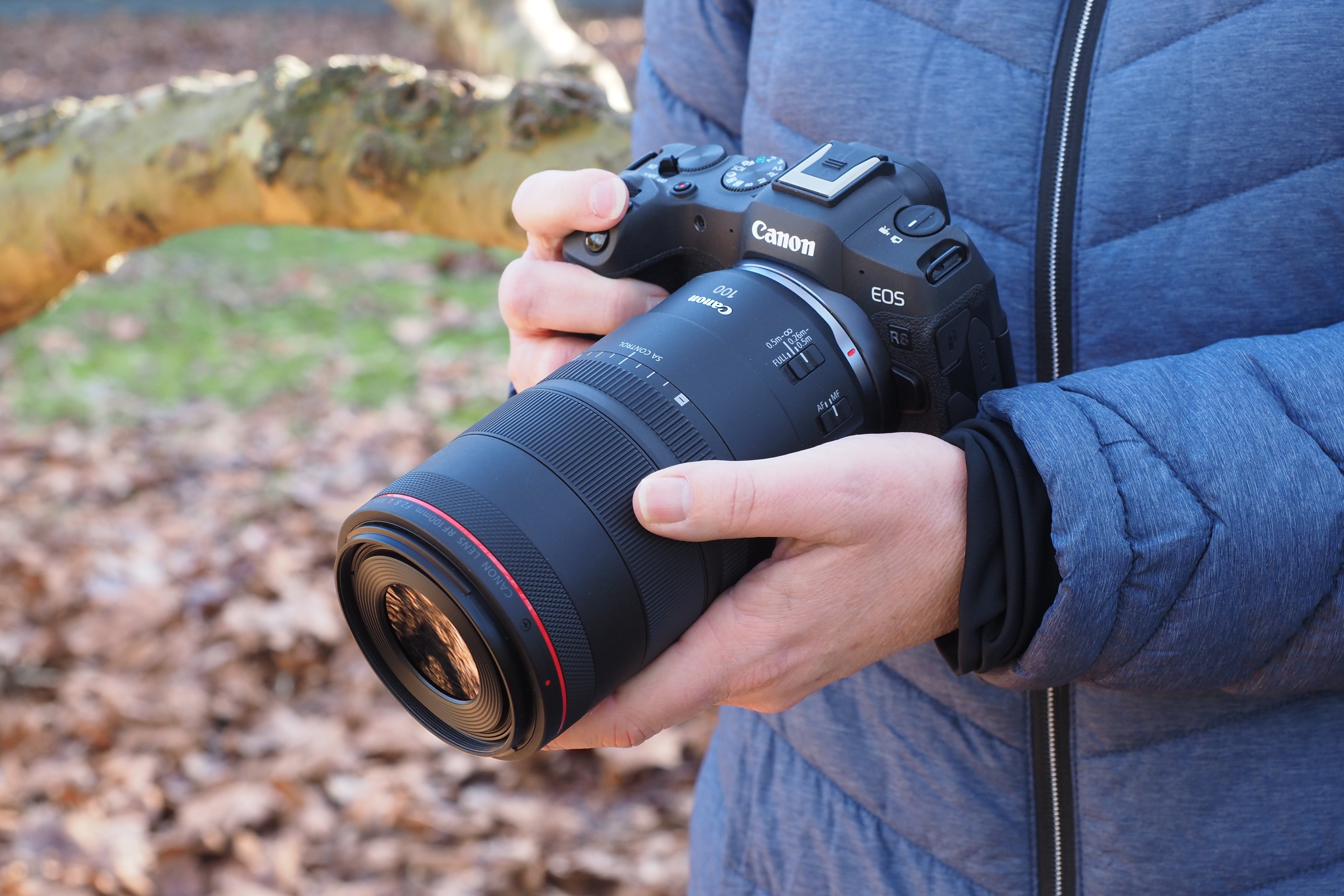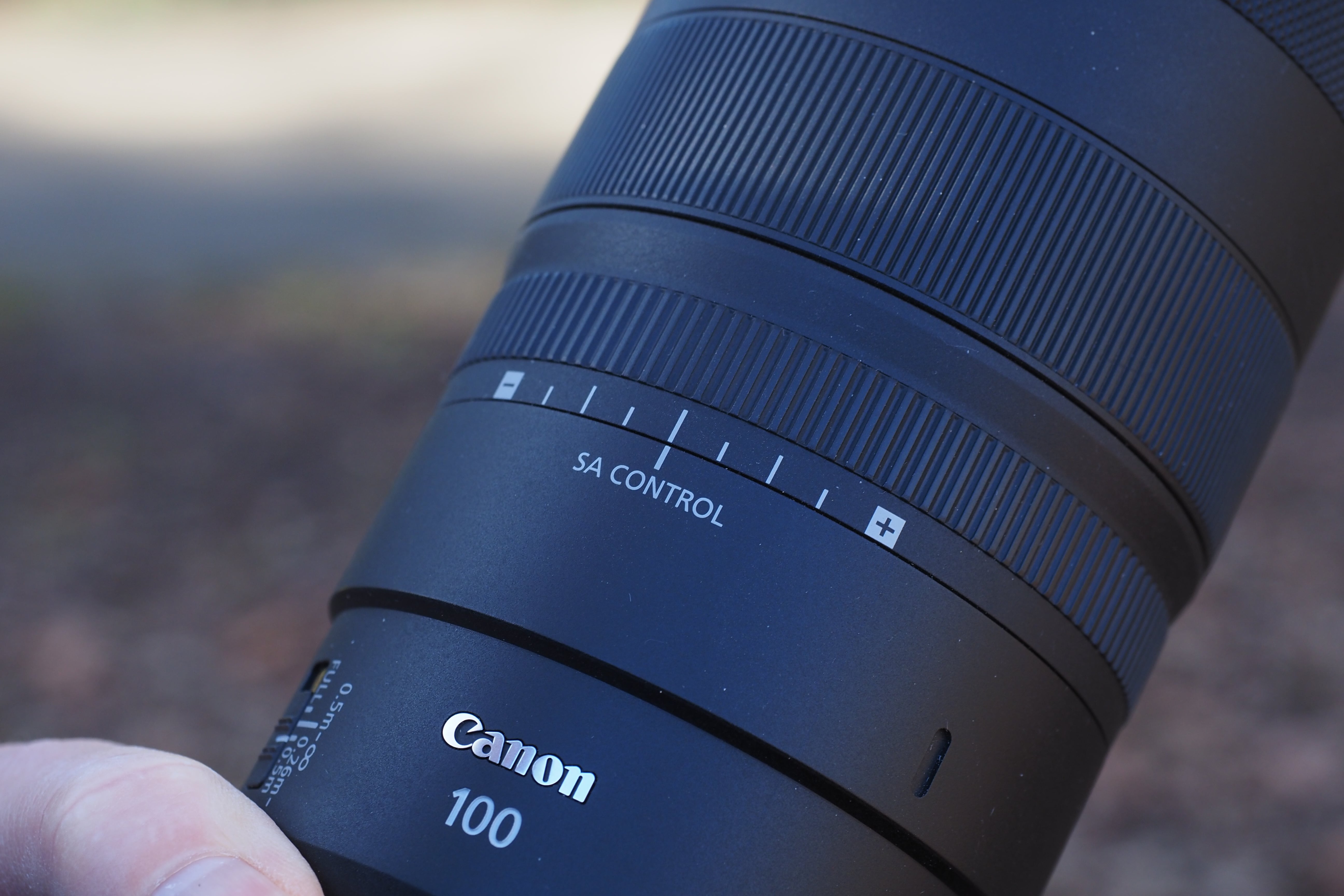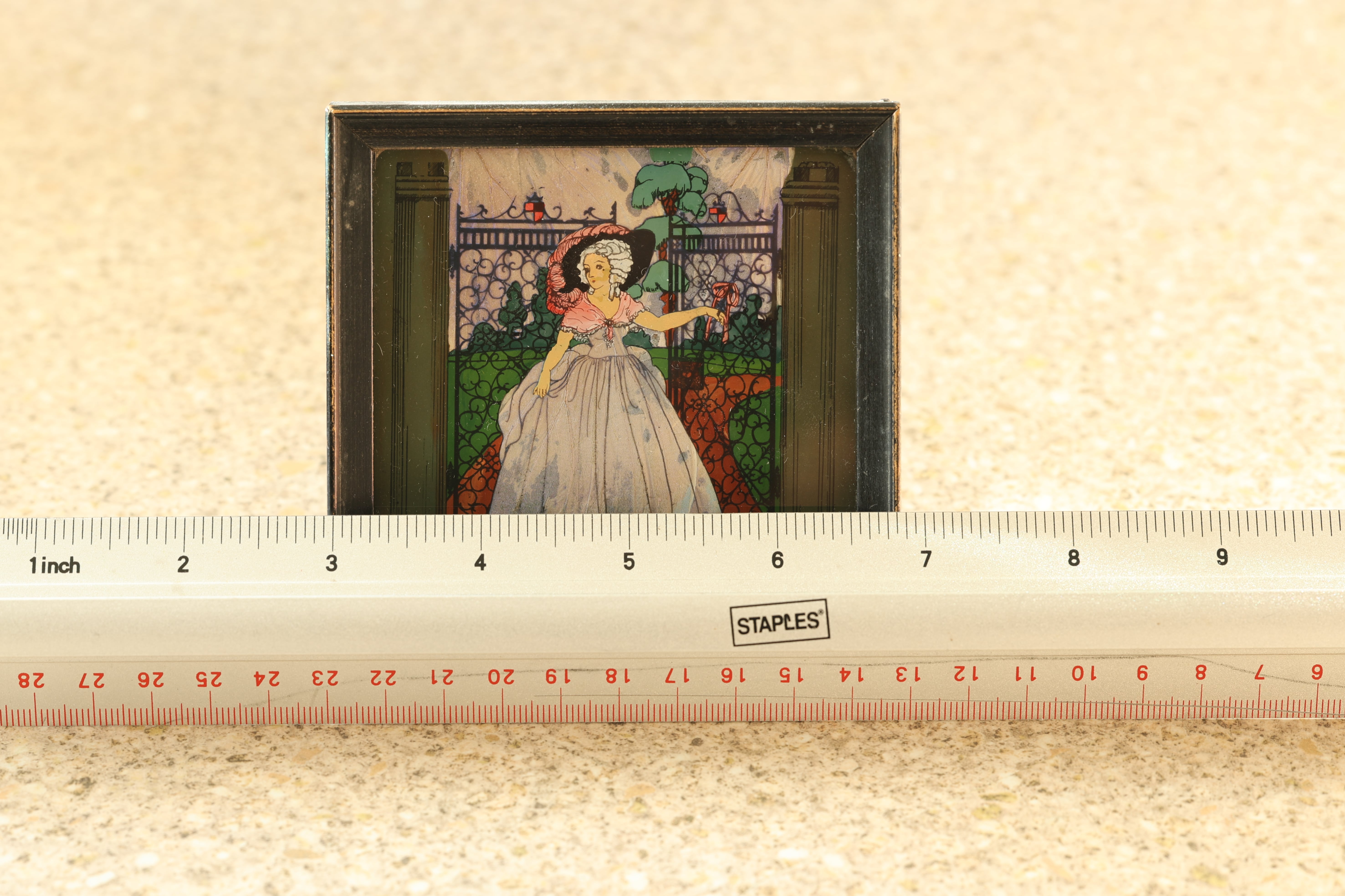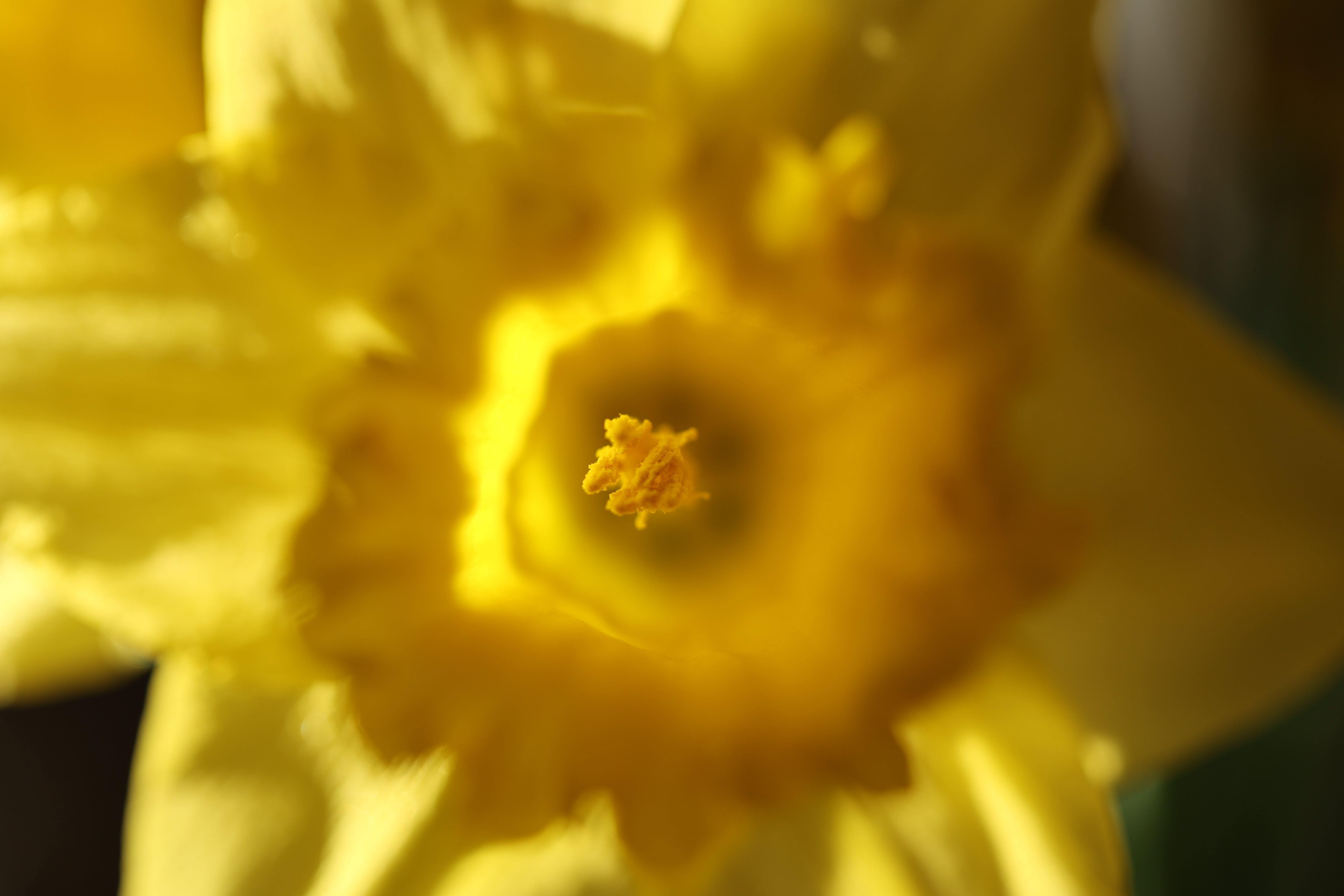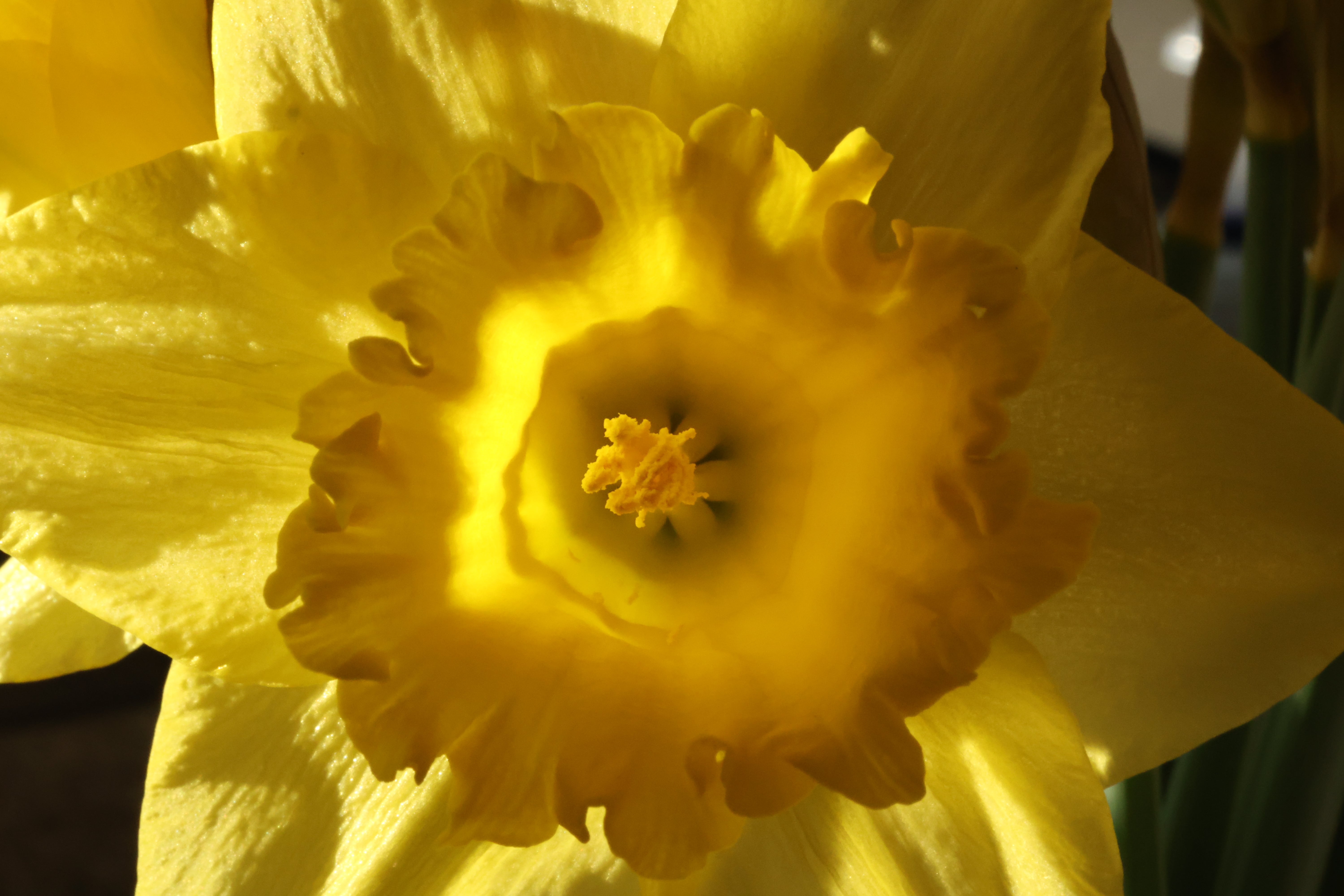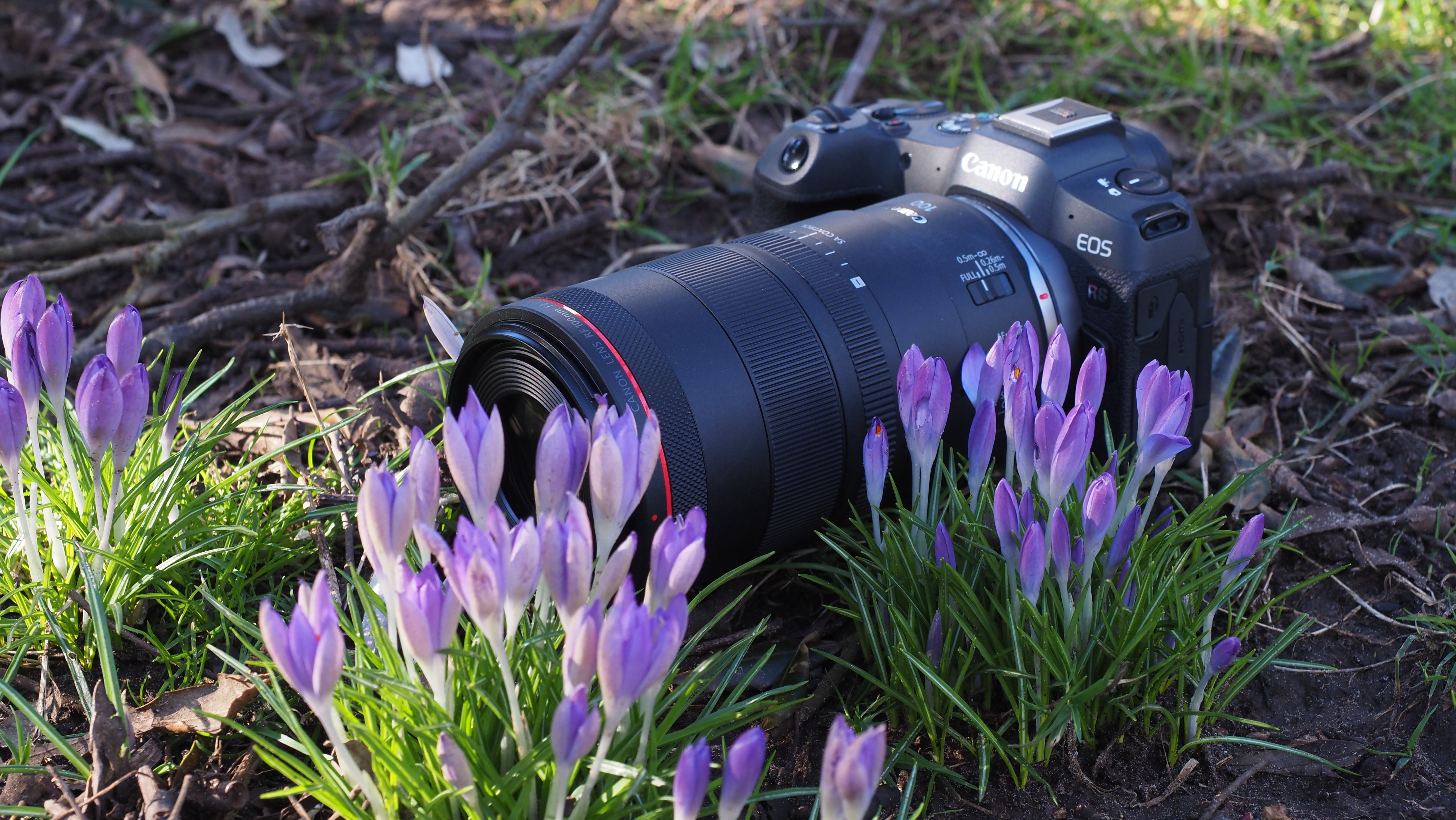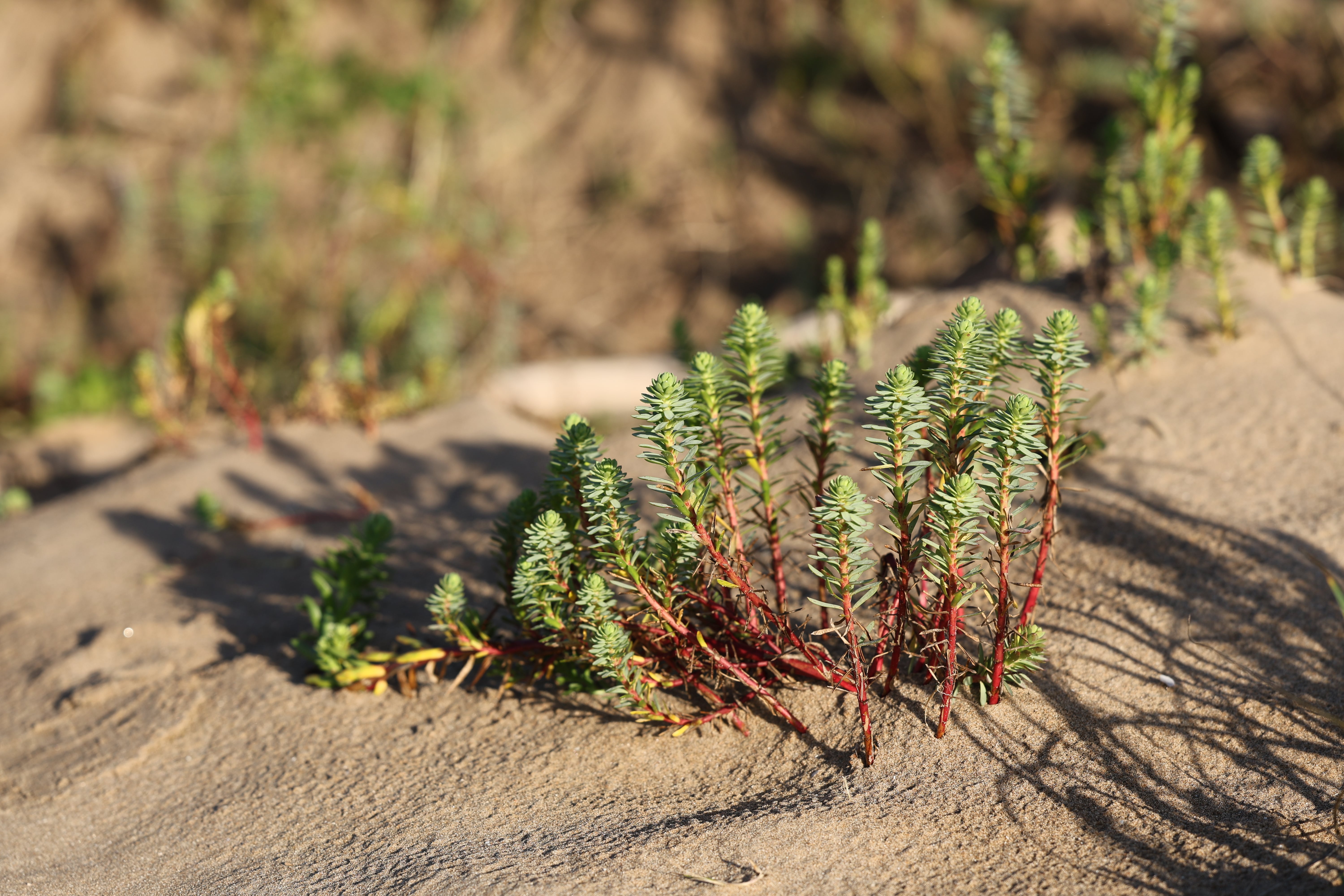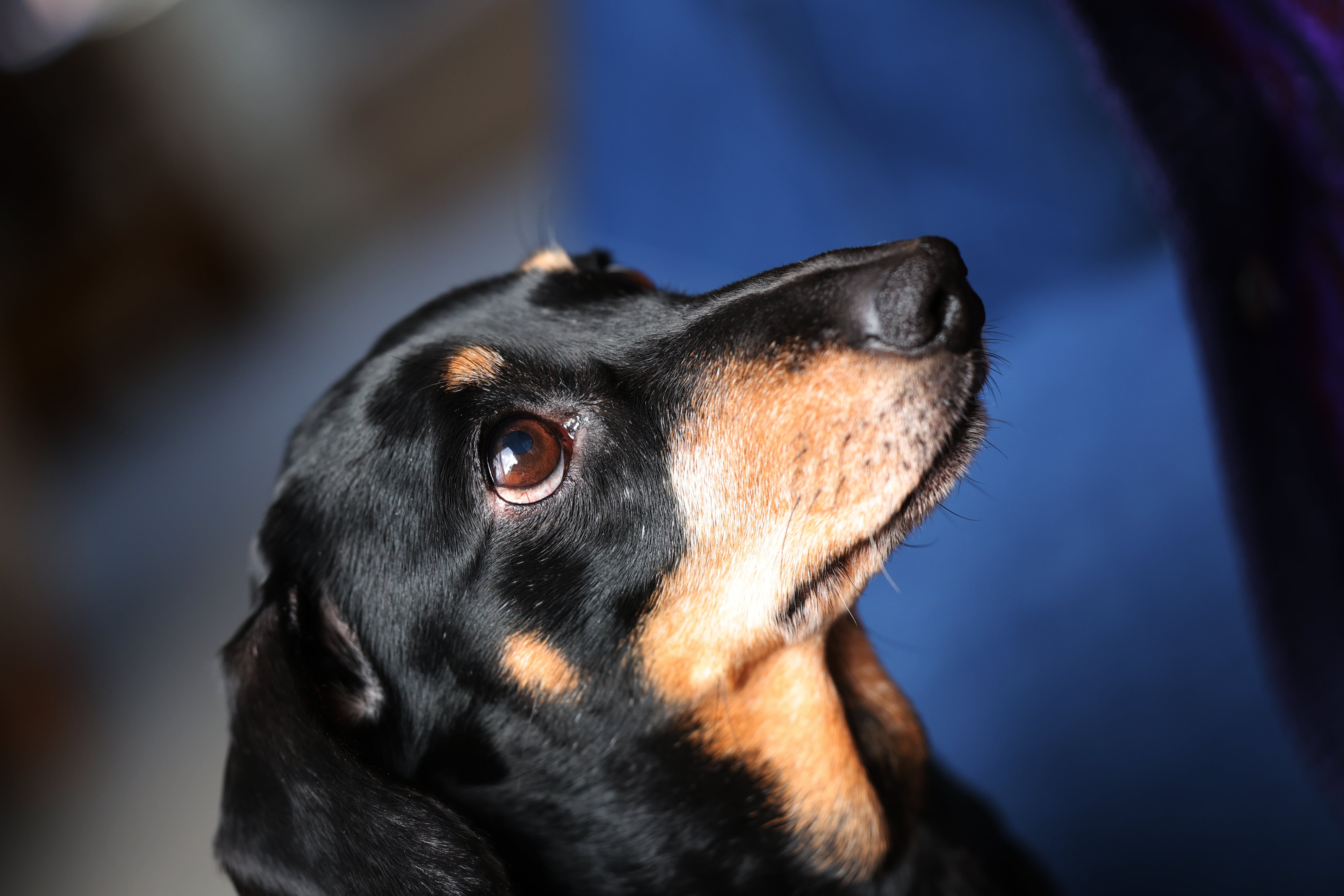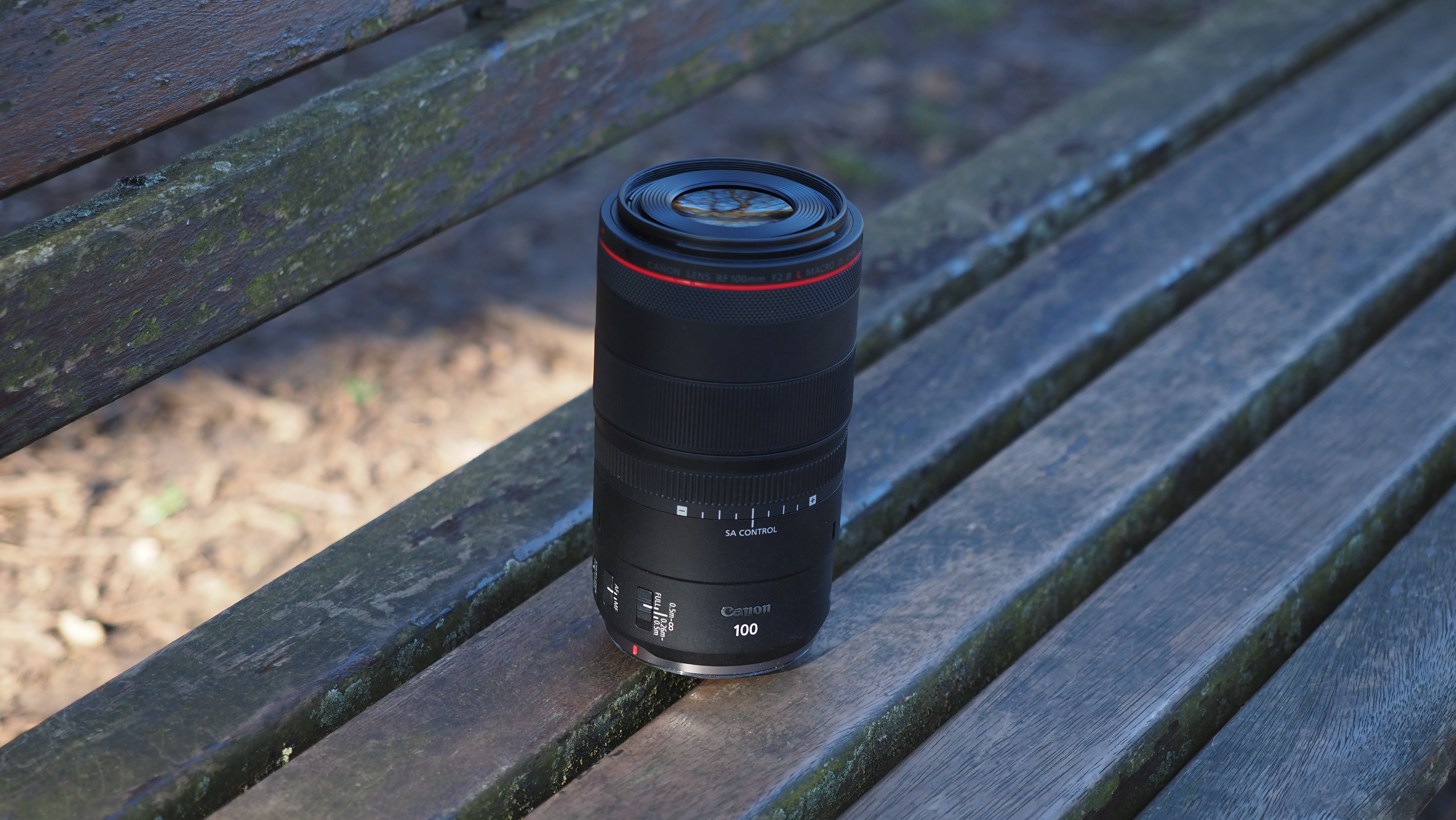TechRadar Verdict
The Canon RF 100mm F2.8L Macro IS USM delivers the same smooth handling of other Canon RF lenses, plus extremely sharp macro images. It has a couple of other tricks besides, including an interesting (or odd) Spherical Aberration Control ring. However, this is a long lens, and at its closest focus its front element is very close to your subjects, which could cause you some lighting headaches.
Pros
- +
Well priced for an own-brand lens
- +
Image stabilization built in
- +
Interesting SA bokeh control
Cons
- -
Short subject distance at full magnification
- -
Twice the price of Laowa 100mm f/2.8
- -
IS less effective for close-ups
Why you can trust TechRadar
Two-minute review
The Canon RF 100mm F2.8L Macro IS USM is the only "official" macro lens in the Canon RF lens lineup. The brand does make some other macro-enabled primes, including the RF 24mm, RF 35mm and RF 85mm f/2 lenses, but these achieve a maximum magnification ratio of 0.5x, or half life size; so while this might be plenty close enough for many users, they're not true 1:1 macro lenses.
The RF 100mm F2.8L Macro IS USM doesn’t stop at life size reproduction, however; it goes to a full 1.4x magnification. That means you can fill the frame with an object just 26mm wide. And that isn't its only interesting feature.
Half way along the barrel is an intriguing "SA", or Spherical Aberration, control ring. This shifts optical elements within the lens to adjust the appearance of bokeh, both in front of and behind your main subject, and can also introduce a soft-focus effect.
It isn't immediately obvious how you're supposed to use this control, since it’s locked at its center position. In fact, there’s a switch on the underside of the lens to unlock it, which is easily missed. This is one lens where it's actually a good idea to read the manual!
This bokeh control is aimed more at portraiture and longer shooting distances; indeed, Canon does seem keen to push this as a "portrait" lens as well as a macro lens. It’s an interesting idea, but then it leaves you wondering whether the Canon RF 85mm f/2 Macro IS STM might be better, being a stop faster and far cheaper, too. You might say the 100mm is a macro lens first and portrait lens second, while the 85mm is the other way around.
I only had the RF 100mm F2.8L Macro IS USM for a short time, so I concentrated on its macro capabilities.
These are pretty formidable. It’s hard to make any sensible comments about edge sharpness wide-open with close-ups because it’s near-impossible to find a subject flat enough to test it on – and to get it perfectly perpendicular to the camera. Photographing a framed vintage "butterfly wing" picture reveals another macro photography issue: objects with layers of paint and textures, especially those under glass that may have dust or fibers on its surface, are actually three-dimensional.
Sign up for breaking news, reviews, opinion, top tech deals, and more.
Only the most ambitious, bokeh-loving macro fan would want to shoot wide open at these distances. You’re more likely to want to shoot at f/11-f/22, and the RF 100mm F2.8L Macro IS USM produced crystal-clear detail that was difficult to fault.
However, while you might think that a 100mm lens should offer plenty of working distance between yourself and your subject, that isn't the case here. At its closest shooting distances, the front of this lens is close enough to your subject to cast a shadow or give unwanted reflection on shiny surfaces. A skilled macro shooter could fix this easily enough with good lighting and choice of angles, but it was still a bit unexpected.
You can also use this lens outdoors on a range of subjects, where its weatherproofed design and fluorine-coated front element should shrug off rain and dew. The lens also has image stabilization built in – although, as Canon admits, the effectiveness diminishes the closer you focus.
This isn't necessarily a fault with the stabilization, but an issue with handheld macro photography. If you can’t keep the camera perfectly steady, even the tiniest fore-and-aft "drift" will throw your subject out of focus between half-pressing and fully pressing the shutter release (switching to Servo AF mode can be an effective solution!).
The RF 100mm F2.8L Macro IS USM’s Dual Nano USM autofocus seemed pretty quick at normal shooting distances, doing a reasonable job of tracking the eyes of our pet Dachshund. However, on occasion it got a bit lost switching to ultra-close subjects. It has a focus limiter to help with this, and you can also use manual focus to get it in the right ballpark first. In fact, manual focus works especially well here. The focus ring is smooth and precise, and there’s a real focus "snap" in the viewfinder to show you when the focus is correct.
Canon says this lens has suppressed focus breathing, which should be especially useful for filming where you want to use focus pulls.
This is a nice lens to use, if rather long. The SA control seems a slightly odd choice for macro work; I guess it's designed more for portraits and larger product shots. It’s good to have a single lens that can do a few jobs, so it’s easy to see how the RF 100mm F2.8L Macro IS USM could create a kind of "product" lens category of its own.
Best of all, it isn't hugely expensive for an own-brand macro lens, especially one that can focus closer than rivals and has IS built in.
Canon RF 100mm F2.8L Macro IS USM Price and release date
The RF 100mm F2.8L Macro IS USM was announced in April 2021 and is now widely available. It typically costs around $1,099 in the US and £1,369 in the UK. However, if you don’t mind manual focus – and you’re not interested in the SA bokeh control – then you can get the Venus Optics Laowa 100mm f/2.8 2X Ultra Macro APO lens for around half that, and with even higher 2x magnification.
Should I buy the Canon RF 100mm F2.8L Macro IS USM?
Buy it if…
You’re looking for a combined macro/portrait lens
The the Canon RF 100mm F2.8L Macro IS USM might not appear the obvious choice for portraits, but a 100mm f/2.8 will deliver pretty strong background separation wide-open, and there’s always that intriguing SA control to play with.
You’re committed to Canon-branded RF lenses
There’s a lot to be said for sticking to Canon lenses. You might pay more, but you're getting consistency of design and "look and feel", not to mention the useful customisable control ring – although there’s no function button.
You need a versatile "wedding" lens
The RF 100mm F2.8L Macro IS USM only has an f/2.8 maximum aperture, but that’s pretty good in a 100mm lens. With this, and the SA control, it could be great for portraits one minute and then perfect for photographing the ring and tiny table decorations the next.
Don’t buy it if…
You shoot close-ups but not life-size macro shots
The 0.5x "macro" capability of the Canon RF 24mm, 35mm and 85mm lenses might sound a poor substitute for a "real" macro lens, but in practice a 0.5x magnification still gets you pretty close – and these are cheaper lenses with broader uses.
You’re interested in sports and wildlife
The RF 100mm F2.8L Macro IS USM will be great for insects and tiny flora, but for animals, sports and any larger subjects where you’re shooting at range, a telephoto zoom will be a better bet, offering more reach and more flexible composition at different distances.
You only want to shoot portraits
The RF 100mm F2.8L Macro IS USM with its SA control is an intriguing option for portraits, but if this is your sole interest then you’re likely to be better off with a regular portrait lens – the cheaper RF 85mm f/2 Macro IS STM, or the huge but stellar RF 85mm f/1.2 L USM, for example.
How I tested the Canon RF 100mm F2.8L Macro IS USM
I tried out the RF 100mm F2.8L Macro IS USM in a variety of situations to test its performance, handling and image quality. One session was spent shooting a family pet to see how well the Nano USM autofocus could keep up with my EOS R8’s excellent AI subject tracking, while another was spent out on the coast, shooting a variety of subjects from driftwood to sea spurge.
I also spent some time testing this lens with typical close-up subjects including a challenging "butterfly wing" picture, some just-open narcissi, and the engravings on a vintage WW1 cigarette case. These were taken using a tripod, the 12-second timer on the camera, and electronic shutter mode.

Rod is an independent photographer and photography journalist with more than 30 years' experience. He's previously worked as Head of Testing for Future’s photography magazines, including Digital Camera, N-Photo, PhotoPlus, Professional Photography, Photography Week and Practical Photoshop, and as Reviews Editor on Digital Camera World.
